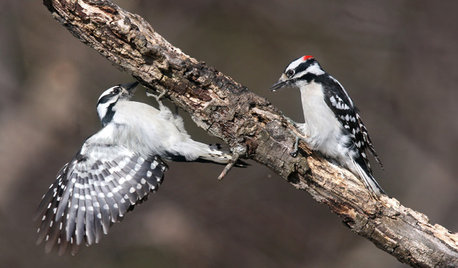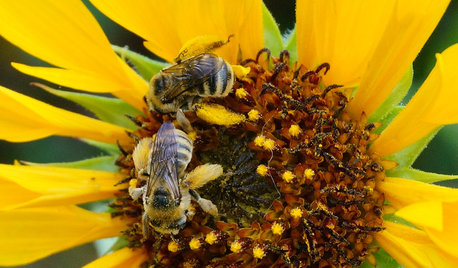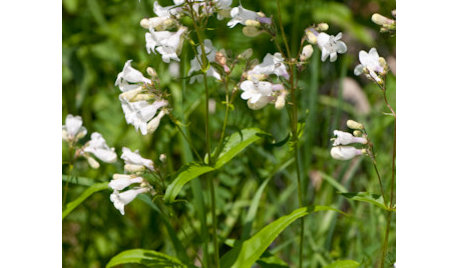Trying to identify LARGE bees
aprilallyear
18 years ago
Related Stories

GARDENING FOR BIRDSBackyard Birds: How to Identify Two Common Woodpeckers
Downy and hairy woodpeckers have similar coloration and behavior. But there are two big differences that separate them
Full Story
EARTH DAY12 Entertaining ‘Bee-haviors’ of Native Bees
The parade of pollinator antics is another reason to create a garden that nurtures native bees
Full Story
PLANTING IDEASWant a More Colorful, Natural Garden? Try a Perennial Meadow
Spend less time tending and more time taking in the sights by improving on Victorian and prairie garden designs
Full Story
GARDENING GUIDESGreat Design Plant: Try Penstemon Digitalis for Showy White Blooms
Bees gather nectar from this North American native while you’ll appreciate its unthirsty nature and soil tolerance
Full Story
GARDENING GUIDES15 Native Flowers That Feed Native Bees
These perennials offer superfood to hundreds of bees and are gorgeous in their own right
Full Story
GARDENING GUIDESAttract Hummingbirds and Bees With These Beautiful Summer Flowers
Roll out a welcome mat for pollinators to keep your landscape in balance and thriving
Full Story
DECORATING GUIDESTry a Handmade Oushak Rug for Warm Spice Tones and Softness Underfoot
Lovely to look at and delightful to touch, these sumptuous Turkish rugs work with a range of room styles
Full Story
GARDENING GUIDES15 Ideas to Try in Your Garden This Year
These gardening stories were tops among Houzz readers. Which ideas might you try this year?
Full Story
HOUSEKEEPINGGot a Disastrously Messy Area? Try Triage
Get your priorities straight when it comes to housekeeping by applying an emergency response system
Full Story
KITCHEN DESIGNLove to Bake? Try These 13 Ideas for a Better Baker's Kitchen
Whether you dabble in devil's food cake or are bidding for a bake-off title, these kitchen ideas will boost your baking experience
Full Story





bejay9_10
selocic
Related Professionals
Windham Landscape Architects & Landscape Designers · Windham Landscape Architects & Landscape Designers · South Orange Landscape Architects & Landscape Designers · Middletown Landscape Contractors · Norwood Landscape Contractors · Holland Landscape Contractors · Lake Zurich Landscape Contractors · Lemay Landscape Contractors · Mercedes Landscape Contractors · Newberg Landscape Contractors · Pahrump Landscape Contractors · Seven Hills Landscape Contractors · Wallingford Landscape Contractors · Greenfield Landscape Contractors · La Puente Outdoor Lighting & Audio Visual SystemsaprilallyearOriginal Author
aprilallyearOriginal Author
bigbee
candicat
stevenwayne
paultperes
gramzkp
jessi_lune
Carrie Thompson